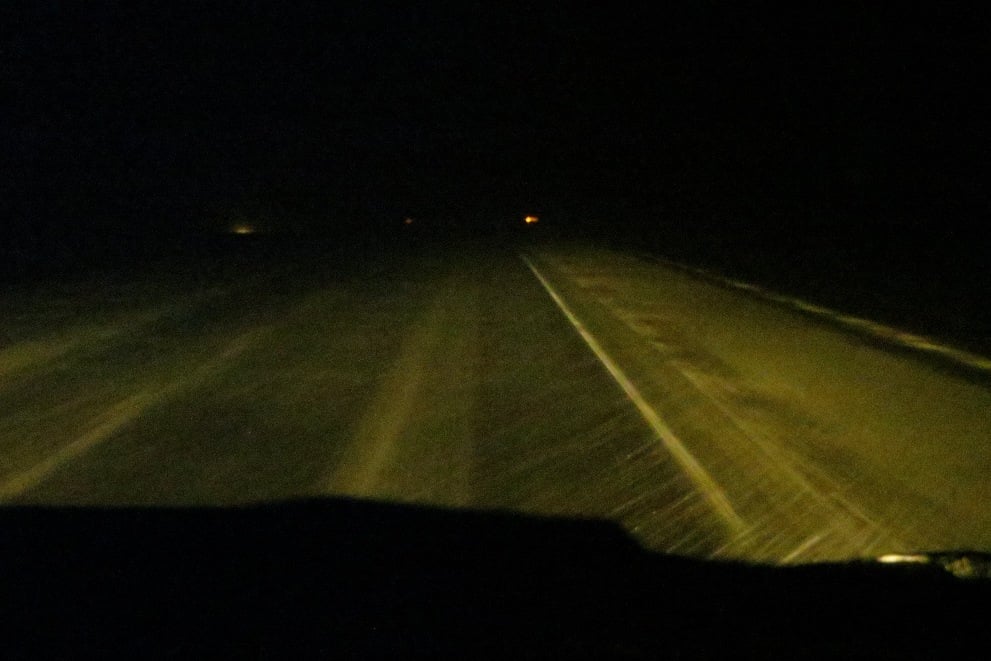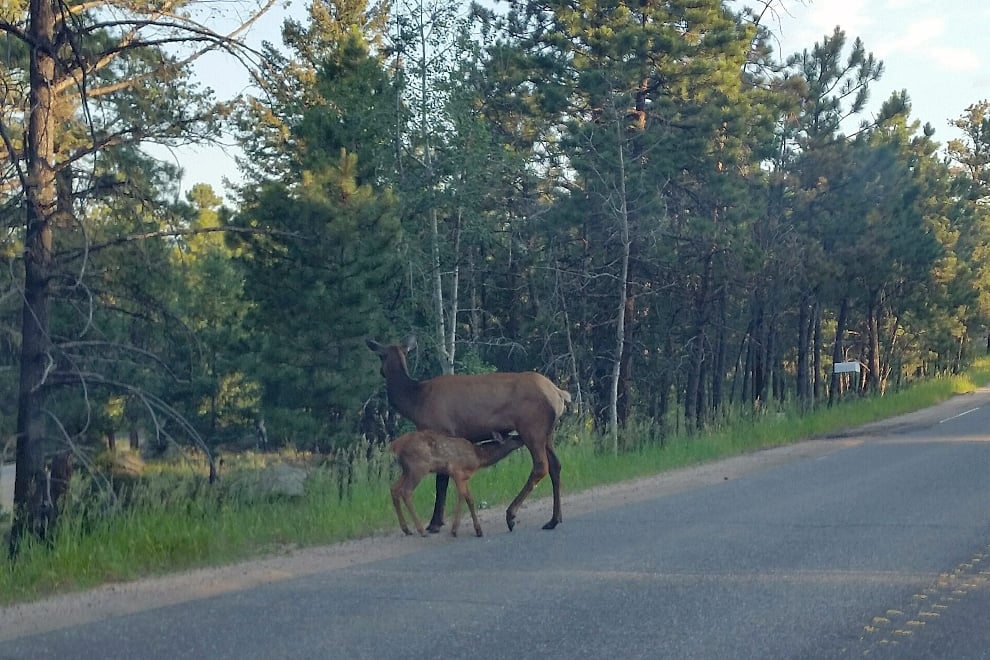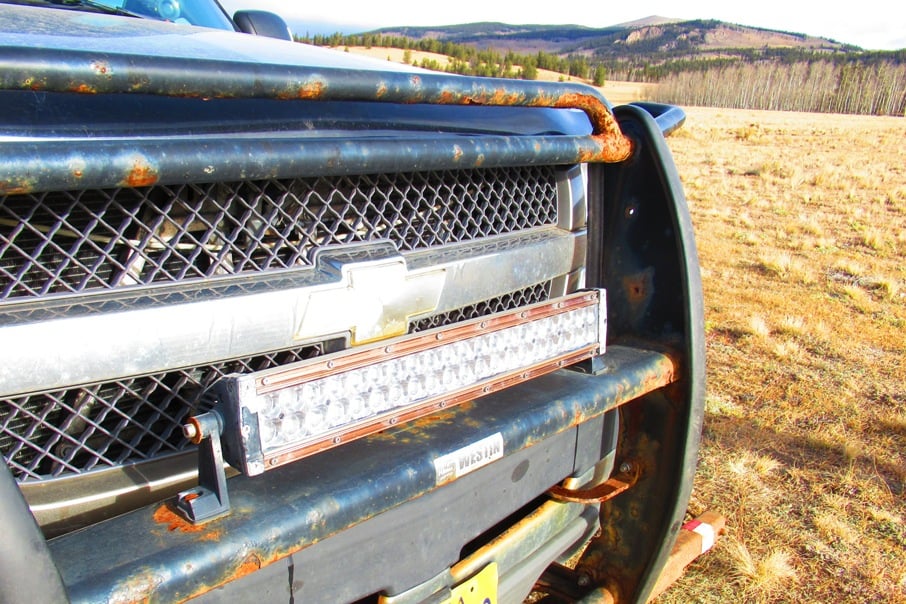
5 Night Driving Safety Tips You Need To Know
Night driving, particularly along remote roads where obstacles and wildlife may be found, can be treacherous. The National Highway Traffic Safety Administration reports that night driving fatalities occur three times more frequently than that of daytime driving.
During low light times, the human eye has a more difficult time with depth perception, color determination, and peripheral vision.
Additionally, as we age, our night vision deteriorates, increasing our risk. Eye strain and fatigue can also lead to dangerous drowsy driving. These tips can help improve overall safety for driving after dark.
1. Adjust your headlights.
Properly aligning your headlights will help keep your beams where they are most useful for night driving and not blinding others approaching you.
Headlight alignment can change over time from loosened light assembly, tire pressure, or where the load weight is being carried. Some headlights have a bubble level in the headlamp assembly to check aim, but often you will have to do it yourself.
Check your owner’s manual for how to correctly adjust the aim of your high and low beams. It may take a few tries, but getting this adjustment dialed in can make a huge difference.
2. Clean your windshield—inside and out.
There is nothing worse than streaks on your windshield, and they can be even more noticeable at night when light bounces off of streaks and grime.
Oil from touching the inside of the glass can linger and smear, which can make for annoying glares. An easy trick to polish glass is to use newspaper that removes residue and doesn’t leave lint behind.
3. Avoid other light sources.
Try to keep non-headlight light sources to a minimum to keep your vision sharp and your concentration focused.
Dim the dashboard instrument panels, use the rear-view mirror dimmer switch, keep map lights and inside reading lights off, and avoid looking at the headlights of oncoming traffic.
It is very easy to stare at bright road signs or other headlights, but this can distract your focus and cause eye strain.
4. Scan for wildlife.
Wildlife is active during the night hours, and can often be found on roads that provide easier travel routes than other forested trails. If you are night driving, it is essential that you keep an eye out for animals to avoid a potentially serious collision.

Wildlife along the road are more active during nighttime hours (Photo by TC Wait)
Animal collisions can be devastating to both the animal and drivers. The cover of dark can protect animals from predators but also conceals them from human eye detection on the roads.
Be extra alert for animals after dark, watch your speed, and scan ahead for retinal reflections of your headlights in the eyes of animals. Often you will see retinal reflections before you can see the actual animal ahead.
5. Add auxiliary lights.
Fog lights not only help you see the road during foggy weather but because they are mounted low to the ground, they spread wider than the low beams helping you see farther along the shoulder of the road.

LED lightbars can add night visibility for remote roads. (Photo by TC Wait)
HID (high-intensity discharge) lights or LED (light-emitting diode) lightbars can also add to your function of the high beams for those who do a lot of night driving in low-density traffic areas.
These lights should be used cautiously, as they can severely blind other drivers, and because your eyes adjust to the brightness, switching to your normal beams will then seem very dim.
Ideally, these lights should be wired in using a relay to draw power directly from the battery while the control wire comes from a switch, the existing high-beams, or both.
HID lights provide extra illumination at great distances in front of the vehicle, while LED lights provide excellent distributed light for illuminating sides of the road and road surface conditions.
Unlike fog lights, HID or LED lights are not good for use in fog or heavy snow, as too much light is reflected back to the driver.
Share your night driving tips with us in the comments or on iRV2 Forums.

The fog lights do help light up to sides of your vehicle but they do light up just in front of your vehicle thus reducing your night vision and seeing farther down the road. It is also illegal to approach an oncoming vehicle with your fog lights on or ant other axillary lighting. Some fog lights are brighter than your high beams. In foggy condition your fog lights don’t work properly if you leave your headlights on, the light from your headlights is reflected back to you thus blinding you.
This is not true about properly adjusted Fog lights. Also it is not illegal to keep your fog lights on when approaching another vehicle. It is illegal to keep your High Beams on when doing so. As stated in the article, have your lights properly adjusted and add some auxiliary lights but remember to turn them off when pulling into the campgrounds.
Buy a headlight restore kit or have them done professional. Will greatly improve the lighting distance.
We get distracted by interesting things along there the way, so there is a lot of unintended night driving. Many 2 lane roads have a fog line defining the right edge of the roadway. It has become a habit to focus on the fog line when there is oncoming traffic…often regardless of their headlight intensity. Fog lights could be illegal in some states.
If both headlights and fog lights are on, both with hid lights, not being monitored by Highway patrols and local police depts? They are very blinding. Is there a legal max brightness for these lights?
Close one eye when passing oncoming traffic. Open immediately after passing.
Doesn’t work if you only have one eye to start with. Some .drivers either don’t know how blinding their lights are (probably out of adjustment) or just don’t care as long as they can see.
sounds like flash to bang training, still use it.
I am in total agreement with Dennis. There are drivers who drive on the highway with LED light bars lit. You just can’t fix stupid.
When oncoming travel with hi beams on , look to the right at the white line , this works try it .
I do what Rich says and look to the right side of the road reducing the brigightd in my eyes. Doesyways work on “S” curves.
There are lumens or brightness rules in every state but to enforce it requires a technical study that is not doable along side the road. Some states ( PA) do regulate the use of fog lights ( only with low beams) and driving / auxiliary lights ( only with high beams). And the limit is two of each.
The use of auxiliary lights, including fog lights, is dependent on State law, and varies state to state.
Like headlights, auxiliary lighting must be properly adjusted for maximum effectiveness and other traffic’s safety. It’s not just oncoming, we’ve all had a vehicle behind us with lights so bright it’s difficult to see.
Properly adjusted fog lights should never blind oncoming drivers. They should be low on the vehicle, with the light parallel to the ground. If they’re blinding oncoming drivers, there of no use in their intended conditions.
The type of bulb, Halogen, HID or LED has little to nothing to do with the effectiveness in use. It’s all about a properly designed fixture, the lens and reflector. There’s a lot of poorly designed lights out there. Putting 100watt bulbs in a 50watt fixture also exasperates the problem.
The main thing is to slow down, Also use night driving glasses. They do help,
What really brothers most is oncoming traffic, especially pick up trucks that have changed their headlights and fog lights with super bright lights. And then they forget to dim them or turn off the fog lights when approaching head on traffic. Scares me most when pulling a fifth wheel and on two lane roads. Lights should be adjusted when pulling a fifth wheel!!!! And turn off those fog lights!!
Why isn’t the troopers cracking down on this illegal practice???
The most common practice to ward off any and all offensive lights from oncoming vehicles is to look 👀 off to the right side of the roadway and follow the white fog line. Use your peripheral vision to keep tabs for on coming traffic to your left.
A good defensive driver will ignore the fact that a high percentile of the cars he faces will have their lights on bright or some other issue that causes him to take defensive action. 🚌 safe driving🚌
WHEN YOU STOP…don’t lose your night vision
When you stop at Iron Skillet or Denny’s or Pilot or 7-11, wear your sunglasses on and have dinner or an early breakfast in the restaurant. When you go back to your rig, lose the sunglasses. Walking in at 10pm with sunglasses on looks a little goofy, but stopping at a lit site without shades will make you lose your adapted night vision, that will take hours to recapture. This is an old pro truck driver trick.
The last tip together with picture shows one of those LED light bars. They are perfect for blinding oncoming vehicles. If you want to see accidents, install them. If you care about other people, don’t.
I know….. I am off in sci-fi land (as I am often told!!).
Why is there not an appliance that can be worn to see much better at night? I am not talking about what is used in the military, but a grade of glasses that will allow us to see much better down the road?
Another question- Many of the class A coaches have these large panoramic windshields…why don’t the manufacturers add a heads up display to their list of options?
Scanning for wildlife? Ha! You’ll never see the one that you hit…figuratively speaking.
If one deer crosses the road there are probably 3 or 4 wanting to follow their pal.
Wind direction has a lot to do with body position while feeding; the nose is usually into the wind. So if you are driving into the wind there are no eyes to reflect in your lights, you’re counting on ear twitches and tail wags to spot them then.
If it has rained, the road surface, the foliage, and the animals are darker. You’d think a bull moose would show up in your high beams, but no. Only when the moose looked at my truck did I see him. There’s nothing like a panic stop at 3 AM to start a busy day!
After 20 years of living in the Rockies, I rarely drive from dusk to daylight. Game animals move from feeding grounds their beds and vice-versa during morning and evening dusk.
you forgot one: Slow down – Speed limits are set for optimal conditions. Reduced visibility at night is a factor that is mitigated by adjusting speed and giving yourself more reaction distance. Also, do not tailgate at night.
I would love to have some “night driving” lenses but they would need to fit over my regular eyewear. What are they and where would I find them? My eyes are getting worse at night since I’m getting older but I do need something to assist. For the most part, I avoid driving at night but sometimes it is necessary. My wife won’t drive at night since she sees a corona on all lights, which is very disturbing.
Have you had Cataract surgery yet? It does help.
Everyone seems to have overlooked this mans primary question.
He is in search of eye wear,
that when placed over his everyday glasses will increase his
“Field Of Vision”
when driving at night.
The suggestions in regards to light adjustments, fog lights, etc., are all to the driver’s best advantage for seeing in front of the vehicle,
and to the right edge of the roadway.
In summary, two very important elements are key to driving safely at night. These are just two out of many that have been listed here.
VISION & LIGHTS
The original question/concern, was that this man, for the most part, had stopped driving at night because he didn’t trust his vision anymore.
Let’s be honest here.
He couldn’t see well enough to drive at night!
He is asking if anyone knows where he can get eye-wear that will fit over his everyday glasses to assist his field of vision.
Hope this was ok, 🤗💫.
Happy Xmas All